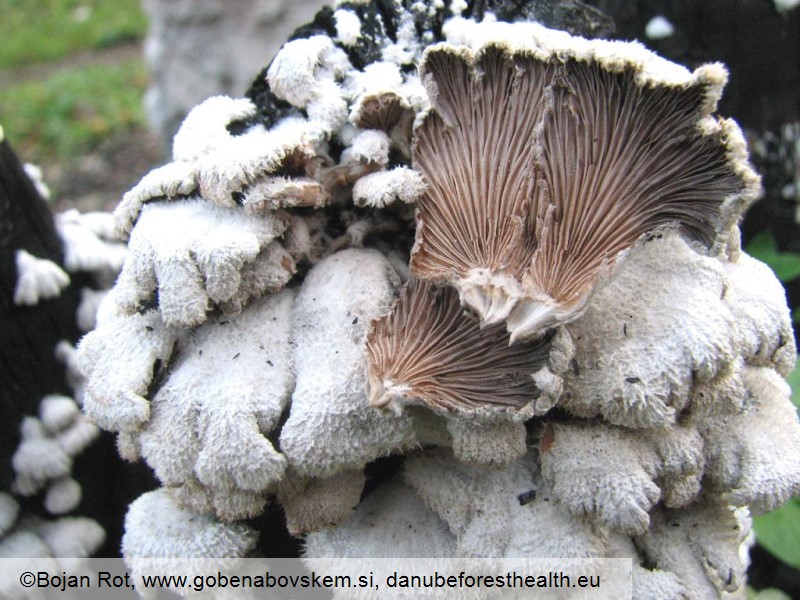Fungi
Split gill
Schizophyllum commune
Nikica Ogris, Thomas Cech
|
|

Fig. 1. Fruiting bodies – above

Fig. 2. Fruiting bodies – below, split gills
DETECTION PERIOD:
whole year
DESCRIPTION:
The fruiting bodies are mostly clustered, 2–5 cm wide, mussel- or fan-shaped, sessile, tough leathery, and often have scalloped margins. Their upper surfaces are pale grey and felty-woolly; on the undersides there are reddish-brown or somewhat pinkish gills, arranged like a fan and split lengthwise along their edges.
HABITAT:
Broadleaves and conifers. The fugus can be found on standing trees which have suffered sunburn and other bark damage. Otherwise it is growing on converted and painted timber.
STATUS:
Widespread in the Danube region.
IMPACT:
The fungus causes a white rot of softwood. Spores can cause various diseases in humans.
SIMILAR SPECIES:
Similar to the white-coloured mushrooms from the genus Crepidotus, which differ by their juicyand fragile consistency, and real (not split) gills (Figs. 3 and 4).
|